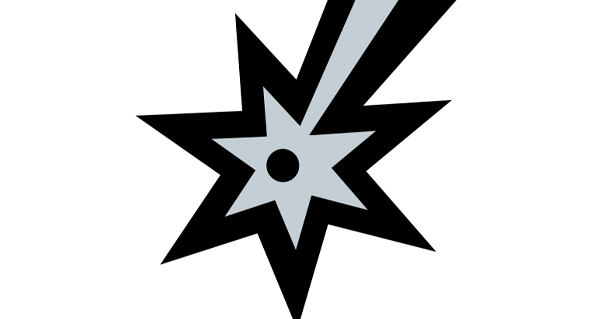PROTECT YOUR DNA WITH QUANTUM TECHNOLOGY
Orgo-Life the new way to the future Advertising by Adpathway
You might have heard that Pilates is great for runners, but how do we get started? Pilates teacher Sophie Hatton explains...

Image credit: Canva
As a Classical Pilates teacher (and someone who’s worked with lots of runners over the years), I truly believe Pilates is one of the most valuable forms of cross training you can do. Running is repetitive and high-impact – it pushes your body in the same direction, over and over. Pilates balances that out. It helps you move more efficiently, recover faster, and avoid those common niggles and injuries that can build up over time.
Why is Pilates good for runners?
Authentic Pilates comprises focussed, controlled movements that strengthen your whole body. Every movement in Pilates starts with a strong, connected powerhouse: your abs, lower back, glutes and inner thighs. It is this strong, stable centre that supports your spine and pelvis, leading to better posture, smoother movement and less strain on your joints when you run.
- Improved running form: Your overall running form is going to be better, making you more efficient. Pilates is all about alignment and control. It teaches your body to move with balance and precision. Over time, your body learns what good form feels like, and you naturally start to run with better mechanics.
- Better flexibility: Most runners I work with are tight in the hips, hamstrings and calves. Pilates helps to gently stretch and open these areas, improving your range of motion and easing that post-run stiffness.
- Lower risk of injury: So many running injuries come from imbalances like one side working harder than the other, or weak glutes, or tight hips pulling everything out of place. Pilates helps to identify and correct those imbalances. It strengthens the deep, stabilising muscles that often get ignored, and that makes a big difference to how your body handles impact.
- Better balance and body awareness: Pilates is great for balance training and coordination, which is especially useful if you’re running on uneven surfaces or trails. It helps you become more aware of how you move and that awareness carries through to your running.
- Improved mental focus: One thing I love about Pilates is how it brings you into your body. It requires focus and control, and that can really help with mental clarity on your runs — especially long runs.
Image credit: Canva
How to find a Pilates class for runners
Not every class is going to suit a runner’s needs, so I always recommend looking for a Classical Pilates Mat, Reformer or Tower class ideally. If you don’t have one nearby, many contemporary mat classes provide the authentic Pilates exercises that should include a focus on feet, ankles, hamstrings and glutes, working on your alignment through slow, controlled movement – not fast-paced or high intensity. This isn’t about doing more or going harder, it’s about moving better and supporting your body so you can keep running well for longer.
If you’re running regularly, Pilates can be a gamechanger. Just one or two sessions a week can improve the way you move, help you recover more effectively and protect you from injuries down the line. It’s smart, functional, feel-good movement – and your body will thank you for it.
Image credit: Pilates Works/Sophie Hatton
Quick pre-run pilates workout
Before your next run, try this pre-run standing Pilates sequence to connect, energise and prepare your body before you set off. It should take approximately five minutes.
1. Breath and core connection
- Stand with your feet hip-distance apart. Soften your knees and gently shift your weight slightly forward into the balls of the feet (heels stay lightly grounded).
- On your inhale, breathe into the sides and back of the ribs.
- On your exhale, draw the abdominals in towards the spine and up towards the ribs.
- Keep this breath pattern going — inhale to expand the ribs, exhale to deepen the lift through the centre. Notice how the torso feels lighter and begins to lift up and out of the hips and ultimately the knees and ankles.
- This is your anchor. Keep that sense of length and connection as you move through the exercises using the inhale to expand the side/back ribs and the exhale to draw in and up.
2. Heel raises with hands behind head (10 reps)
- Start in Pilates first position — heels together, toes slightly apart.
- Link your fingers and place your hands behind your head. Stand tall and gently press your head back into your hands to feel the shoulder blades wide on your back, your arms connect into your back, focusing on drawing in and up and keeping the ribs on the front of the body connected and drawing towards the back of the body.
- Inhale to lift the heels, keeping them together if possible. Grow tall through the crown of the head finding your two way stretch.
- Exhale to lower the heels with control, keeping length and connection through the centre. This is a great way to warm the calves and ankles while switching on postural support.
Image credit: Pilates Works/Sophie Hatton
3. Walking on the spot (15-20 reps)
- With your breath and abdominals engaged, stand tall, feet hip-width apart and bring your weight slightly forward again.
- Place both hands lightly on top of your head. Keep your upper body steady and imagine balancing a full glass of water up on your head (no spills!).
- Walk on the spot, alternating the lift of one foot at a time, with the movement coming from the lower body.
- Once you feel steady, you can bring your hands to your hips.
- Think of this like the running exercise on the Reformer — the torso stays connected and quiet while the work and movement comes from the lower half of the body with the pelvis remaining stable.
4. Standing saw (3–5 reps each side)
- Stand in parallel with your feet slightly wider than your hips. Arms reach out to the sides at shoulder height. Keep both hip crests facing forward.
- Inhale to twist from the ribs.
- Exhale to round forward, reaching your left hand towards the outside of the right leg (thigh, knee, calf or ankle – wherever you can reach). Your right arm reaches up, palm forward, and you look back behind you, keeping your neck in line with your spine.
- Inhale to start lifting from the ribs.
- Exhale to return to the centre. Repeat on the other side.
- The saw is a wonderful exercise for connecting the whole body; enjoy the hamstring stretch, the full spinal connection, the sacrum, thoracic spine and ribs in particular benefit from connecting with the limbs.
Image credit: Pilates Works/Sophie Hatton
5. Standing lunge (3–5 reps each side)
- Step your right foot forward and your left foot back into a long stance, with both feet pointing straight ahead. Keep your front heel grounded and your back heel lifted.
- Find your balance. Engage your centre drawing in and up on your exhale.
- Inhale to lift and lengthen through the crown of the head.
- Exhale to bend the front knee (tracking over the toes) and begin to gently lower your back heel towards the floor keeping the leg as straight as possible. Aim to reach it away from you.
- Only go as low as feels stable — it’s about control, not depth.
- Choose your arm option:
• Hands on hips for support
• Arms wide for expansion
• Hands behind head for challenge and postural control - Repeat on the other side.
Always listen to your body. If any exercise doesn’t feel right that day just pull back from it or make it smaller.
Thanks to Sophie Hatton from Pilates Works, Southport for providing this workout and the information above.
For more information visit www.pilatesworks.co.uk and follow the brand on Instagram @pilatesworks_southport.























 English (US) ·
English (US) ·  French (CA) ·
French (CA) ·